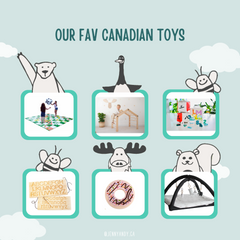
Play is so important, as it helps children learn while having fun and allows them to learn at their own pace. But there are different types of play and different stages of play.
The first stage of play starts as simply as a social smile. Eventually, your baby observes adults doing things. They’ll imitate those behaviours and start to apply those observations in their own solitary play. At around 2 years old, your toddler may be ready for the next stage of play: parallel play.
Parallel play is a form of play in which children play on their own but they are playing near or next to one another. Parallel play may appear pretty antisocial with little opportunities for learning, but it is actually a precursor to more social play and an important developmental milestone with many benefits.
For starters, here are 5 key benefits of parallel play:
1. Understanding social interactions
Parallel play doesn’t equal complete isolation and can, in fact, help your toddler gain a better understanding of social interactions. Parallel play simply allows a child to play freely and be in their own world.
They can observe and learn from others at a safe/comfortable distance while in the comfort of their own space. Your toddler then stores these observations and new findings and saves them for the time when they are developmentally ready for group and cooperative play.
2. Learning to share and take turns
During parallel play, children aren’t separated by walls or physical boundaries. There may be some wandering eyes and wandering hands reaching for others’ toys. At this age, their minds take big developmental leaps when they learn to assert themselves.
Children in the parallel play stage are possessive of their toys and belongings since they don’t yet understand sharing. This is completely normal and natural, and it will help to practice sharing, teach turn-taking, and teach the concept of “yours” and “mine” at home.
Understanding the word and concept “mine” isn’t only an important developmental milestone, but also an important step in understanding boundaries. Teaching your toddler to say “mine” allows them to protect what’s theirs, but it’s also important to help them understand that toys can be safely shared and won’t be taken away forever.
3. Language development
As you might have already realized, toddlers are like sponges. They are constantly observing and learning, even when it doesn’t seem like it. While your toddler is playing independently but alongside others during parallel play, they’ll be listening to and learning words from children or adults who are close by. They might even steal a glance and see an object or action being called a certain word and adopt it into their own vocabulary.
4. Gross and fine motor skill development
Whether a toddler engages in social play with others or chooses to play more independently, they’ll likely be manipulating a variety of different toys and objects. Improving dexterity and strengthening gross motor muscles remains an important part of your child’s development.
When toddlers play alongside other children, they’ll have the opportunity to observe and imitate new ways to play with and manipulate objects. Even seemingly simple toys like blocks and dollhouses can be challenging for a tot’s still-developing muscles.
5. Freedom to express feelings
During parallel play, toddlers learn more than the mechanics of different toys and objects. They’re also using every tool they have, including toys, their own body, and any objects around them, to express their feelings.
Parallel play gives them the freedom to express joy, silliness, fear, frustration, and even embarrassment without the added pressure one can encounter during full-fledged social interactions.
Takeaways
This together-but-separate playing lays the foundation for more socially complex interactions in the future. As your toddler grows and learns, he’ll engage in interactions that involve more cooperation, coming up with novel ideas and games, sharing, and feeling empathy for others.
Though it might seem antisocial and fruitless, parallel play is really an important step in learning how to interact with others. Playing side-by-side is a natural part of the progression of your child’s social development. Even though a child engaged in parallel play isn’t interacting with peers, he’s still learning from them. Your toddler just needs encouragement and plenty of opportunities to play and explore around other children his own age.
Download our Comprehensive Developmental Milestones Checklist PDF for free ☑️!
About the author:
Sam is Jenny & Andy’s Marketing Coordinator. Before she joined Jenny & Andy, she was a speech therapy associate and behaviour therapist who spent 5 years working with young toddlers with autism and other exceptionalities and their families.
Her therapy sessions required her to work collaboratively with Speech-Language Pathologists, Board Certified Behaviour Therapists, Occupational Therapists, Teachers, and Registered Early Childhood Educators.
Sources:
-
American Academy of Pediatrics. The Power of Play – How Fun and Games Help Children Thrive.
-
Dale F. Hay (2019). Peers and Friends, in Encyclopedia of Infant and Early Childhood Development (Second Edition). DOI: 10.1016/b978-0-12-809324-5.23639-0
-
Pathways. How Kids Learn to Play: 6 Stages of Play Development.
-
Scott H.K., Cogburn M. (2021). Peer Play, in: StatPearls.
- Yogman M, et al. (2018). The power of play: A pediatric role in enhancing development in young children. DOI: 10.1542/peds.2018-2058



